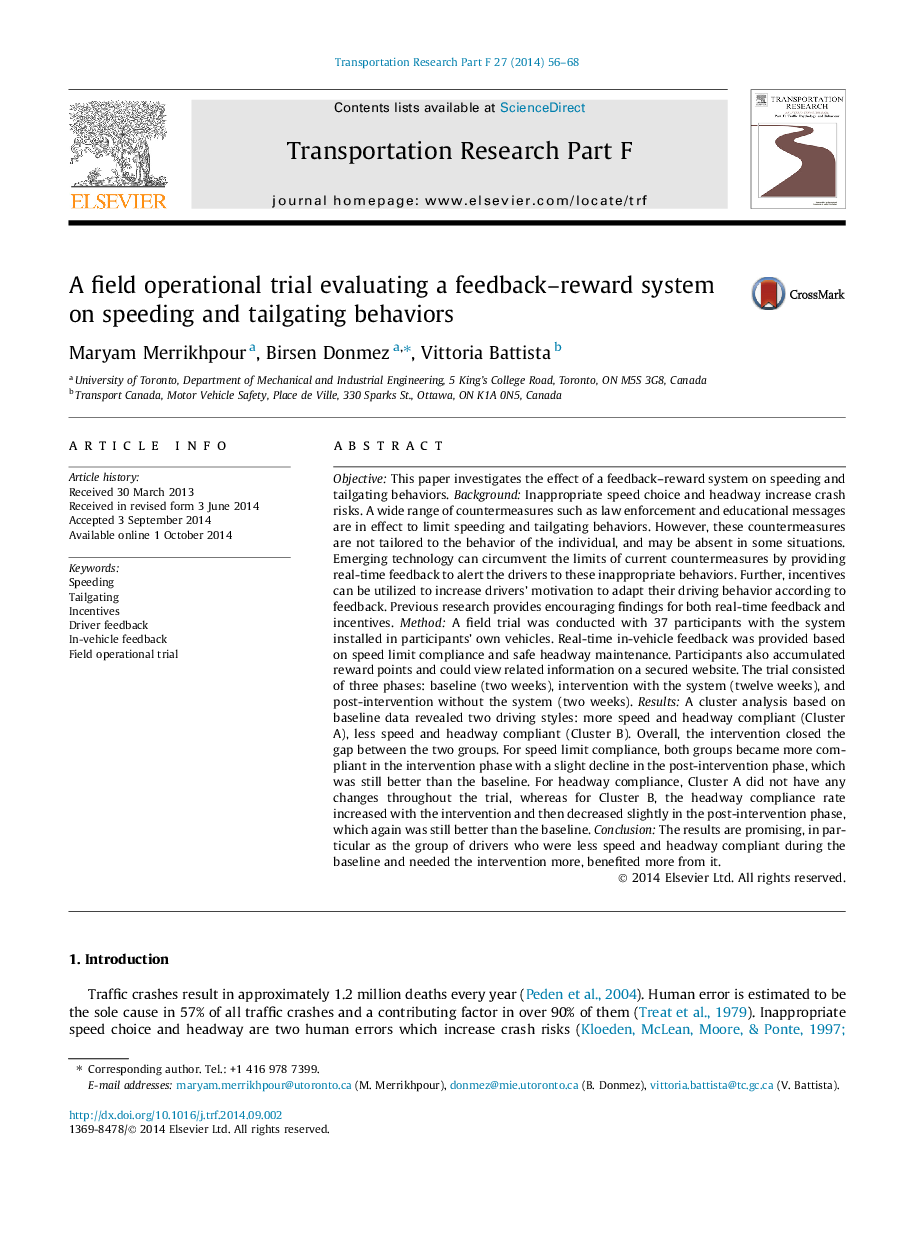| کد مقاله | کد نشریه | سال انتشار | مقاله انگلیسی | نسخه تمام متن |
|---|---|---|---|---|
| 897714 | 915186 | 2014 | 13 صفحه PDF | دانلود رایگان |

• Real-time feedback combined with rewards was evaluated in a field trial.
• Two driver groups were identified based on baseline data: driving styles A and B.
• Drivers in A were less speed and headway compliant during the baseline than B.
• The intervention closed the gap between the two groups.
Objective: This paper investigates the effect of a feedback–reward system on speeding and tailgating behaviors. Background: Inappropriate speed choice and headway increase crash risks. A wide range of countermeasures such as law enforcement and educational messages are in effect to limit speeding and tailgating behaviors. However, these countermeasures are not tailored to the behavior of the individual, and may be absent in some situations. Emerging technology can circumvent the limits of current countermeasures by providing real-time feedback to alert the drivers to these inappropriate behaviors. Further, incentives can be utilized to increase drivers’ motivation to adapt their driving behavior according to feedback. Previous research provides encouraging findings for both real-time feedback and incentives. Method: A field trial was conducted with 37 participants with the system installed in participants’ own vehicles. Real-time in-vehicle feedback was provided based on speed limit compliance and safe headway maintenance. Participants also accumulated reward points and could view related information on a secured website. The trial consisted of three phases: baseline (two weeks), intervention with the system (twelve weeks), and post-intervention without the system (two weeks). Results: A cluster analysis based on baseline data revealed two driving styles: more speed and headway compliant (Cluster A), less speed and headway compliant (Cluster B). Overall, the intervention closed the gap between the two groups. For speed limit compliance, both groups became more compliant in the intervention phase with a slight decline in the post-intervention phase, which was still better than the baseline. For headway compliance, Cluster A did not have any changes throughout the trial, whereas for Cluster B, the headway compliance rate increased with the intervention and then decreased slightly in the post-intervention phase, which again was still better than the baseline. Conclusion: The results are promising, in particular as the group of drivers who were less speed and headway compliant during the baseline and needed the intervention more, benefited more from it.
Journal: Transportation Research Part F: Traffic Psychology and Behaviour - Volume 27, Part A, November 2014, Pages 56–68